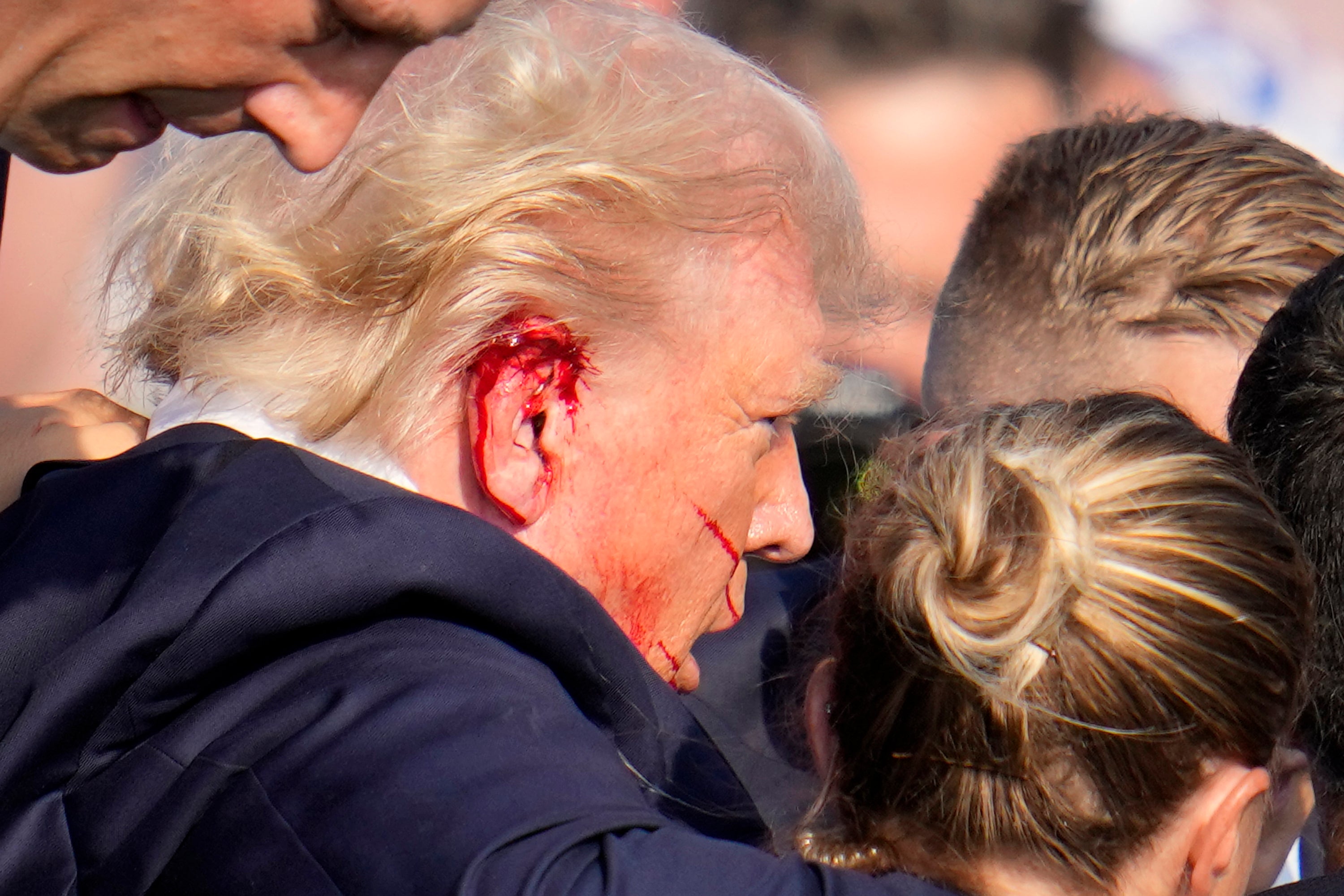I know what the ‘suspicious’ woman at the Trump rally shooting was really up to
The instinct to reach for our smartphone and press record – regardless of the occasion – is a modern illness, says Zoë Beaty


First, it was a regular rally, then it was an assassination attempt – and now, inevitably, the shooting at Donald Trump’s Pennsylvania rally is a conspiracy theory. And, in the past couple of days, the internet sleuths have uncovered a new villain.
Her crime, it seems, is that she is supposedly behaving suspiciously.
“Who is the woman in the black hat, behind Trump?” hopeful Sherlocks are asking on social media. “Watch her closely,” they’re telling their followers. “Gunshots ring out and her first instinct is to very, very calmly pull out her phone and film the whole spectacle. Does that seem like normal behaviour to you?”
Others note how she is “not even freaking out”, and that “her body language & behavior seem to indicate she knew that something was coming”. According to the social media conspiracists, this apparently makes her a “deep state agent”. Or maybe a CIA operative? Or an undercover assassin.
Or maybe, you know, it does seem like normal behaviour. Isn’t she just the same as the rest of us, whose instinct when anything happens is to immediately get our phones out?
While we should be able to safely assume that, for the majority of people, getting some iPhone footage wouldn’t be the first thing to spring to mind in a panicked crowd. But we also can’t deny the facts: that, no matter how high our moral standards climb, the instinct to press record, regardless of the occasion, is very much a modern illness.
Whether it’s a mate falling over, or the sight of a crash, or burning building if the woman in the sunglasses, lurking behind Trump’s podium isn’t involved in a dangerous plot, she’s certainly part of an unsettling culture that we’re all implicated in, too. Pics, or it didn’t happen – right?
I had a reckoning with an incident recently, albeit with a scenario significantly less notable than the events at Saturday’s rally. As I began to leave my best friend’s house one Friday evening a few weeks ago, a Land Rover that lost control smashed through her garden wall and several trees onto the driveway.
Thankfully, the family of three inside the car were fine – they’d swerved to avoid an oncoming lorry, and no one was hurt. But the next few hours were no less full of drama.
Neighbours emerged, full of genuine concern and with phones at the ready – first to offer to call 999, then immediately for “documentation”. “Just in case – as evidence for their insurance,” someone generously offered, snapping some of the gory details (a bumper hanging off). Another did a full panoramic video – and all “documentation” immediately and irrefutably got sent to anyone who would reply on WhatsApp.
Then other people began to appear, out of nowhere, silently taking photos of what, to be fair, looked like a disaster movie scene. Cars stopped en route, arms with phones attached to them hanging out of their rolled down windows; a bus full of people slowed down almost to a halt to gawp. Police advised the vehicle owners to take the number plates off the crashed car since it wouldn’t be long before it would be plastered all over social media. I started searching TikTok to see if my mate, who ran out of the house mid-hangover in pyjamas and a dressing gown at 5pm, had gone viral yet.
There didn’t seem to be one person, young or old, who didn’t immediately reach for their phone and take a quick pic – or stop for a full shoot – on their way past the scene. And we see this time and time again – at funerals, in the (condemned, at least) selfies at Auschwitz, and during confrontations on trains, where several phones are watching but no one is actually stepping in.
Filming car crashes is so out of control that police have begun mass-prosecuting motorists who record crashes on motorways (while driving) in recent years. Most of us, I think, have felt the queasiness of witnessing strangers recording someone in trouble, rather than lending a hand. Rarely – aside from notable examples like the Grenfell fire, when onlookers’ videos provided vital information for firefighters looking for people still trapped in the building – has it been useful.
Is it just nosiness? Or the bystander effect? Is it so-called crash-for-cash culture on social media, now that pap shots are no longer limited to journalists carrying a long lens? Or the currency of social media, where everyone has a take and everyone is, apparently, fair game? There, we can laugh, or ogle, or publicly condemn the things we deem too far – while simultaneously sharing it with a mate. Now anything is a meme, we live in a perma-centre of a public photography storm.
You just have to make sure it’s not you at the centre of it. Of course, the irony is that the internet’s new villain – “the woman in the black hat and sunglasses” – has had a taste of that now, after going viral herself. Perhaps she’s chuffed with her five seconds of fame, or 10 seconds of blurry video. Who knows. Or perhaps she’s asking herself, what was I doing?
Maybe next time she’ll fight her instincts to instantly reach for her phone – as we should do, too.






Join our commenting forum
Join thought-provoking conversations, follow other Independent readers and see their replies
Comments